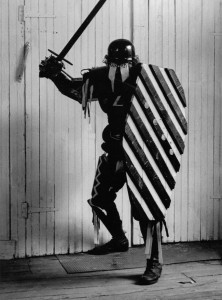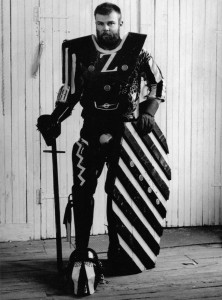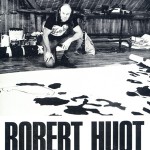The Beginning
When I think about my work as an artist, it seems I always go back to the point at which I began to think of myself as an artist, the moment I saw the possibility and considered using a major portion of my day for “Art” activities. This happened when I was an undergraduate chemistry student. I had always drawn, painted and made all sorts of things but never thought of these as “Real Life” activities. The only adult I knew who made art was the town barber who decorated his shop on holidays. — RH
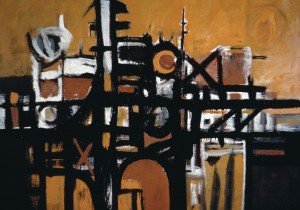
Wagner
At Wagner College I met a few students who were feeling what I was feeling, and a teacher, Tom Young actively involved in the Abstract Expressionist movement. Soon I was hanging-out on Tenth Street and drinking beer with a lot of fine artists at the “Cedar.” I finished my degree in chemistry, took a few art courses, and painted. — RH
Student
Huot’s involvement with painting began in the mid-1950’s, when he was a student (and chemistry major) at Wagner College on Staten Island. As result of the influence of Wagner teacher/artist, Tom Young, Huot, still a teenager, found his way to the Cedar Bar on University Place off 8th Street, in New York, where a vital art scene had developed around abstract expressionism. Huot hung out with Franz Kline and other important artists. After graduation from Wagner, and two-year stint in the army (1958-1960), Huot moved into Manhattan, where he supported himself by working as a pigment chemist, and studied for a time at Hunter College with Fritz Bultman and George Sugarman. By 1964, he had several significant one-man shows, first at Stephan Radich Gallery and subsequently at Paula Cooper, as well as in West Germany and Switzerland. — SM
In winter of 1962 Bob Morris and I began to work on a performance “War”. We presented it at Judson Church in early 1963. My “official” art career had begun. — RH
Political
As the 60’s came to a close, my life was changing rapidly. The Vietnam War, marriage, the Art Worker’s Coalition, political activism and the move to the farm all pushed me in different directions. From minimalism to invisibility to letting it all in, produced a variety of work, including posters, banners and writing. — RH
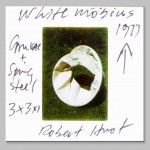 Möbius
Möbius
In one of the last diary paintings (#48), when I got to the end of the roll of paper, I began to paint back over what I had done, so the end was at the beginning. This got me thinking about the möbius strip, a continuous one-sided figure that exists in three dimensions. As I played with the möbius, I found that a certain relationship between length and width, when compressed to flatness, produced a hexagon composed of equilateral triangles and thus the Möb-hex. — RH
Hunter
When I got to Hunter, Motherwell was gone but there were other teacher-artists and students who were just what I needed – Bultman, Surgarman, Parker, Morris, Ohlson, and more. I spent 3 or 4 semesters at Hunter and got much from my associations. — RH
Sink or Swim
I quit my chemistry job and ran a small paint factory for Nate (Neti) Berman. We made some good quality, inexpensive oil paint in large sizes for artists, but the trend was to acrylic, so after a year we closed the factory. I went on unemployment until my benefits ran out. Luckily, Gene Goossen (Hunter) offered me a part-time job teaching discussion groups in Introductory Art History. It was sink or swim, and I swam. — RH
Evolution
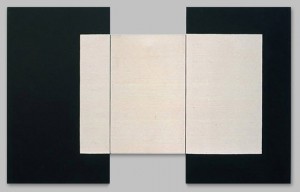
During the 1960’s, Huot’s art practice underwent continual evolution. Beginning as an abstract expressionist (from 1956-1961), Huot soon began to react “to the idiosyncratic gestures of our art fathers.” By the mid 1960’s, he was questioning the conventional shape of painting in a variety of rigorously formal ways. For the Spring Line series, e.g., Huot used the module of the square to structure paintings that stretch into long, narrow, horizontal, subtly-balanced two-and-three part canvases-premonitions of his later work with 16mm film strip. His work became increasingly minimal until, at the end of the decade, political concerned-a revulsion to the Vietnam War in particular, and accumulating doubts about the way art-making functioned in society – led to his involvement with the Art Workers Coalition and to conceptual pieces that abjured the discreet, saleable artwork altogether. Working with strips of tape, slightly modifying architectural details in the living spaces of friends, making sand paintings at night and sweeping them up before anyone saw them, painting two walls of the Paula Cooper gallery blue and coating the sanded floor with polyurethane, Huot searched for ways to work as an artist without participating in the commerce of art, which seemed to continue oblivious of larger political developments. — SM
Disappearing Act
Finally, Huot’s interest in making art that was virtually invisible led to his own disappearing act: he bought a farm in central New York and, with his spouse, Twyla Tharp, moved into the farmhouse to reconnoiter. — SM
Serenity
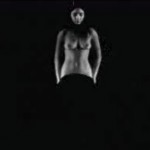 The rhythms of the farm forced Huot out of his city sense of time and into new ways of thinking about art. In 1965, Huot met Hollis Frampton, whose interest in film and willingness to share what he knew with Huot, helped enter the arena of filmmaking. During the late 1960’s, Huot successfully brought his minimalist/conceptual aesthetic to celluloid, with inventive results: he scratched into the emulsion (for Scratch, 1967), spray painted strips of clear leader (for Spray, 1967), embedded a single frame of photographed imagery – a close-up of a woman’s crotch – within several minutes of monochrome red (Red Stockings, 1969); against a black background, recorded a nude white woman slowly covering herself with black paint (Black and White Film, 1969) and paid homage to Duchamp (Nude Descending the Stairs, 1970). At the farm, however, Huot’s filmmaking and his painting took a different turn. Far from the requirement of performing for the New York City art world, Huot began to perform for himself, in order to clarify who he was. — SM
The rhythms of the farm forced Huot out of his city sense of time and into new ways of thinking about art. In 1965, Huot met Hollis Frampton, whose interest in film and willingness to share what he knew with Huot, helped enter the arena of filmmaking. During the late 1960’s, Huot successfully brought his minimalist/conceptual aesthetic to celluloid, with inventive results: he scratched into the emulsion (for Scratch, 1967), spray painted strips of clear leader (for Spray, 1967), embedded a single frame of photographed imagery – a close-up of a woman’s crotch – within several minutes of monochrome red (Red Stockings, 1969); against a black background, recorded a nude white woman slowly covering herself with black paint (Black and White Film, 1969) and paid homage to Duchamp (Nude Descending the Stairs, 1970). At the farm, however, Huot’s filmmaking and his painting took a different turn. Far from the requirement of performing for the New York City art world, Huot began to perform for himself, in order to clarify who he was. — SM
Huot’s retreat to a farm in upstate New York, around the time of Kent State, Jackson State, and Cambodia, represented disgust with the world and the way art was being used as well as a personal decision. He was active at a time in the Art Workers Coalition. The diary films, which began when he went to the country, were clearly a personal necessity at the time – a deeply felt need (then shared by many of us, though few acted upon it) to re-integrate one’s life and one’s art. — LL
